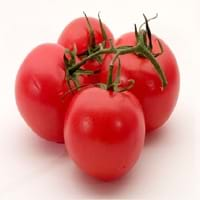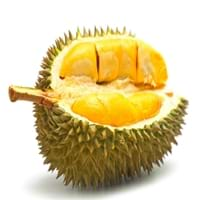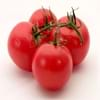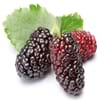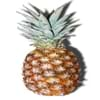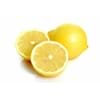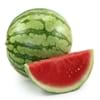Health Benefits
Anti depressant, Cancer prevention, Heart care, Muscle pain relief, Prevents constipation, Regulation of heart rate, Weight loss properties
Anti depressant, Boosts immune system, Cancer prevention, Heart care, Reduces stress
General Benefits
Controls blood pressure, Eye care, Maintains healthy cholesterol level, Strengthens bones
Anti oxidant properties, Anti-inflammatory properties, Boosts immune system, Controls blood pressure, Controls blood sugar levels, Digestive aid, Flu treatment, Strengthens bones
Skin Benefits
Anti-aging benefits, Heals sunburn, Skin rejuvenation, Treatment of acne, Treatment of skin diseases
Anti-aging benefits, Brightens and lightens complexion
Hair Benefits
Good conditioner, Prevents hair loss, Softening mask
Promotes longer and healthier hair, Protects hair
Allergy Symptoms
Anaphylaxis, Coughing, Diarrhea, Eczema, Hives, Itching sensation in throat, Nausea, Skin Rashes, Runny nose, Sneezing, Swelling of mouth, tongue or lips, Vomiting, Wheezing
Diarrhea, Headaches, Hives, Nasal congestion, Red rash, Runny nose, Vomiting
Side Effects
Heart burn
Affects blood glucose levels, Nausea, Stomach pain
Best Time to Eat
Along with meal, Don't consume at night and before bed, Morning time (before lunch)
Along with meal, As a snack in the late afternoon, Don't consume at night and before bed, Morning time (before lunch)
Vitamin B5 (Pantothenic Acid)
Vitamin C (Ascorbic Acid)
Vitamin E (Tocopherole)
Not Available
Vitamin K (Phyllochinone)
Not Available
Lutein+Zeaxanthin
Not Available
Phytosterol
Not Available
Calories in Fresh Fruit with Peel
Not Available
Calories in Fresh Fruit without Peel
Not Available
Calories in Canned Form
Not Available
Calories in Pie
Not Available
Type
Berry, Fruit vegetable
Tree fruit, Tropical
Season
All seasons
Monsoon
Varieties
Better Boy, Early Girl, Beefsteak, Beefmaster, Pink Brandywinem, Caspian Pink, Thai Pinks, Hawaiian Pineapple, Kellogg’s Breakfast, Cherokee Purple, Black Ethiopian and Paul Robeson
D24, D99 (Gob kecil), D123 (Chanee), D145 (Beserah), D158 (Gan Yau), D159 (Monthong), D169 (Tok Litok), D188, D189, D190, D163 (Hor Lor) and D164 (Ang Bak)
Color
Green, Orange, Pink, Purplish black, Red, White, Yellow
Green
Taste
Sour, Sweet
Creamy, Sweet
Origin
Central America, South America
South-Eastern Asia
Grows on
Bushes
Not Available
Soil Type
Loam, Sandy loam
Clay
Climatic Conditions
Sunny, Warm
Hot, Humid
Facts about
- Around 10,000 varieties of tomatoes are grown in the world.
- In Buñol, people celebrate the Tomatina festival where around 1.5 lakh tomatoes are used.
- As per Guinness book of records, heaviest tomato weighed 3.51 kg.
- 1 kg of durian contains 1350 calories which may cause weight gain.
- It may have a hyperthermic effect on the body, making you feel warmer.
- Study shows that durian has an ability to reduce infertility in men & women.
Top Producer
China
Thailand
Other Countries
Brazil, Egypt, India, Iran, Italy, Mexico, Spain, Turkey, United States of America
Indonesia, Malaysia, Philippines
Top Importer
Nigeria
China
Top Exporter
Netherlands
Thailand
Botanical Name
Solanum lycopersicum
Durio zibethinus
Synonym
Lycopersicon esculentum
Lahia Hassk
Subkingdom
Tracheobionta
Tracheobionta
Division
Magnoliophyta
Magnoliophyta
Class
Magnoliopsida
Magnoliopsida
Subclass
Asteridae
Dillenhidae
Family
Solanaceae
Malvaceae
Species
S. lycopersicum
D. zibethinus
Generic Group
Nightshade
Not Available
Compare Tomato and Durian
It is important compare Tomato and Durian as both the fruits have a different nutritional value. Their comparison can be done on the basis of their vitamin and mineral content, calories, benefits as well as characteristics, making it easier for us to choose the best fruit for our diet. Their general health benefits are as follows:
Tomato Benefits: controls blood pressure, eye care, maintains healthy cholesterol level and strengthens bones.
Durian Benefits: anti oxidant properties, anti-inflammatory properties, boosts immune system, controls blood pressure, controls blood sugar levels, digestive aid, flu treatment and strengthens bones.
Fruits are also used as a remedy for various hair problems. The hair benefits of Tomato are: good conditioner, prevents hair loss and softening mask and hair benefits of Durian are: promotes longer and healthier hair and protects hair. Some fruits are known to cause allergic reactions. The allergy symptoms of first fruit are: anaphylaxis, coughing, diarrhea, eczema, hives, itching sensation in throat, nausea, runny nose, skin rashes, sneezing, swelling of mouth, tongue or lips, vomiting and wheezing and the symptoms of second fruit are: diarrhea, headaches, hives, nasal congestion, red rash, runny nose and vomiting. Get sorted Tomato vs Durian comparison with the help of fruit comparison tool by fruitvs.com.
